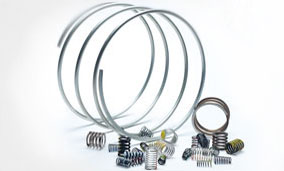Posts Tagged ‘conical spring’
Find a Quality Conical Compression Spring for Your Project
A conical compression spring typically withstands more pressure than a standard spring because of its innovative design. A cone shaped compression spring has a wide base that tapers to a smaller top. This shape allows it to keep going while more traditional springs buckle and break. Replacing your outdated springs with a newer model…
Read MoreThe Basics of Spring Coiling
While most springs are manufactured using a similar coiling technique, the shape of the coil can create an entirely different type of spring. When a spring is manufactured, precise measurements are taken and prototypes are constructed to ensure the coil provides the right amount of compression and deflection. Besides the linear coiled compression spring, other…
Read MoreThe Advantages of Conical Springs
The design, shape and material of your springs affects the functionality and efficiency of their application. When ordering springs for your product, it is important to understand how the dimensions and shape impact the maximum performance of a spring. Conical springs, in particular, have a strength and stability during compression that is matched by…
Read MoreSpring to the Next Level
It is hard to think of any machinery that does not use some variety of spring. For complex mechanisms such as compressors, many types of springs are used throughout. Broken or worn springs can cause improper balance, slower performance and impeded function. To keep your compressor functioning at its peak, regular maintenance checks are…
Read MoreHow to Obtain the Best Conical Compression Spring Design
The capacity for superior performance in a compression spring is essential to the success of your project. Quite simply, if your spring does not perform well, then your application will be able to function correctly. How can you design and obtain the most precise conical compression spring? You will have to consider a number of…
Read More
